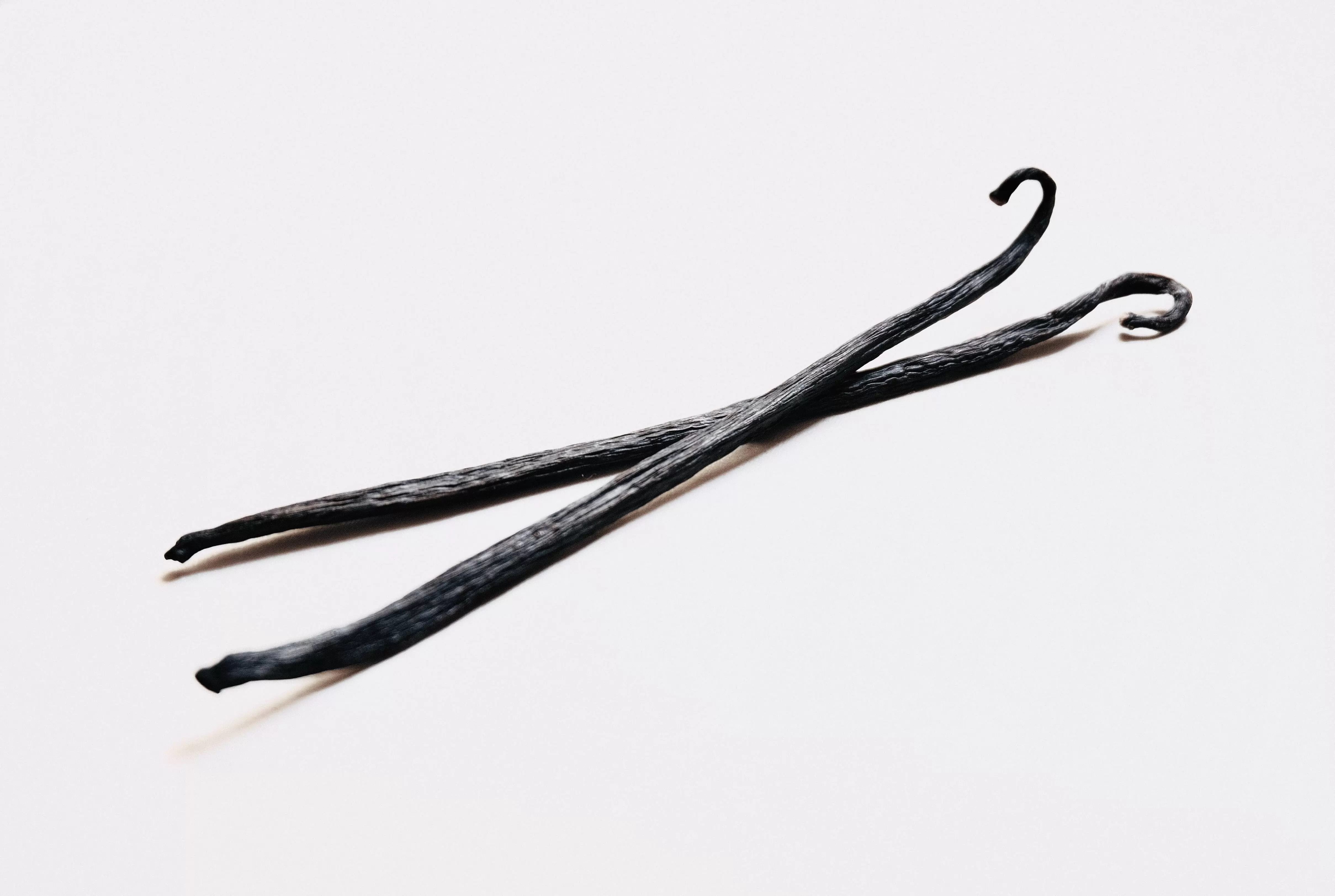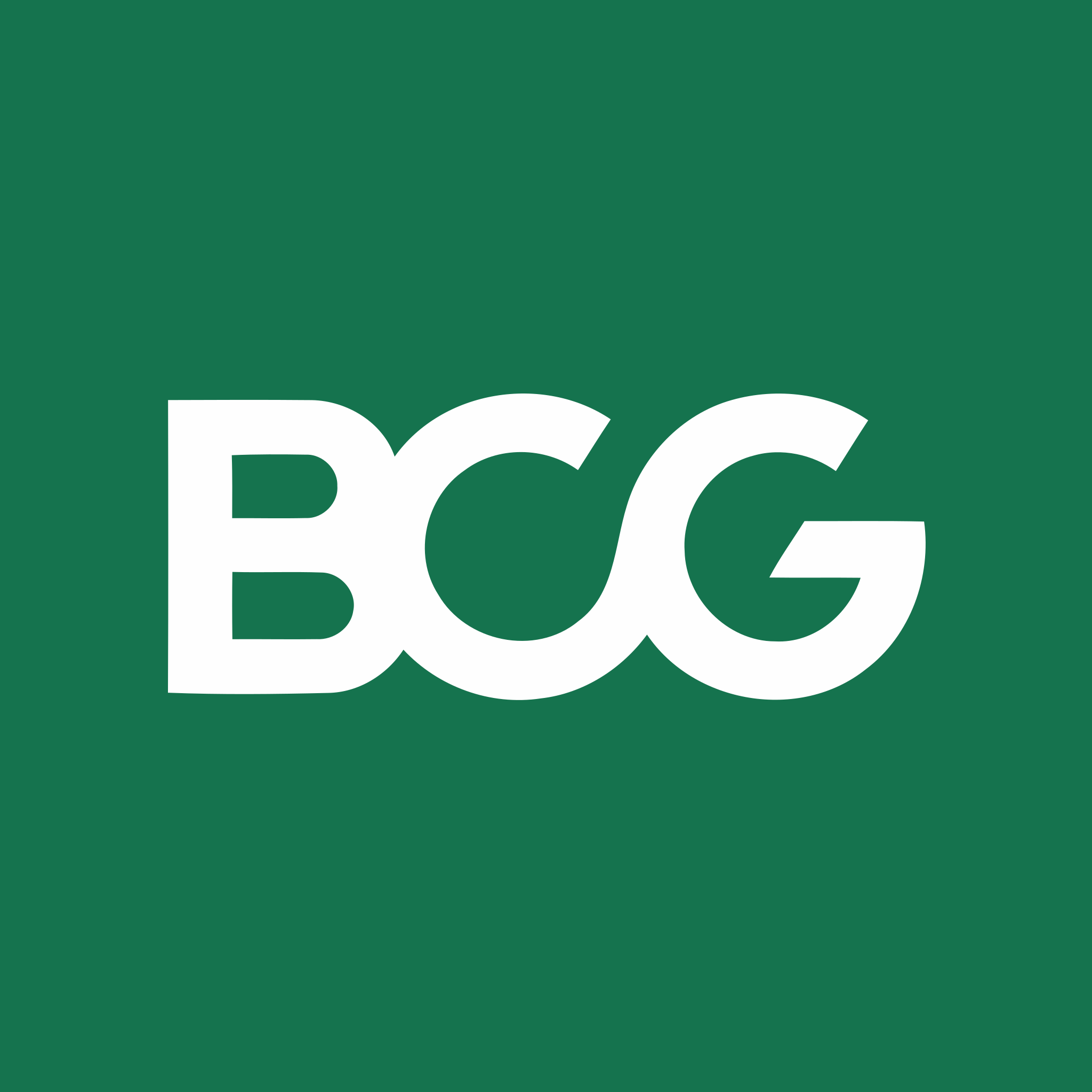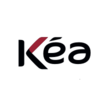Summary of our market study
France imports over 1,200 tonnes of vanilla each year, worth over 200 million euros
The world vanilla market has undergone significant fluctuations and changes, with Madagascar remaining the dominant producer, contributing around 80% of global supply. World vanilla production is around 7,000 tonnes.
The market is highly concentrated among large industrial groups, which have a major influence on small-scale producers
Demand for vanilla remains strong in the pastry, perfume and cosmetics industries.
The structure of the vanilla market is characterized by a fragmented value chain with many small players between producers and exporters.
France's growing appetite for vanilla
French consumers are the second largest consumers of vanilla in the world, after the United States, and France holds a significant share of vanilla imports from Madagascar.
The French market is characterized by a preference for natural vanilla in food and cosmetics, despite the fact that synthetic vanilla is much cheaper than natural vanilla.
In France, the appeal of vanilla remains strong, with average consumption reaching around 5.6 grams of vanilla per capita per year. France is the world's second-largest importer of vanilla, with a market share of between 15 and 20%. This demand far exceeds the consumption rates of other major countries.
The majority of France's vanilla requirements are covered by imports from Madagascar, a country which alone supplies between 75 and 80% of French vanilla imports, to a value of almost €200 million.
France re-exports part of its vanilla imports and plays an important role in the international vanilla trade.
The food industry, industrial chocolate makers, dairy and ice-cream manufacturers, and the cosmetics industry all stimulate demand
French consumers, either individually or through artisanal producers such as patissiers and chocolatiers, contribute significantly to vanilla consumption.
French consumers show a strong preference for Bourbon vanilla, which accounts for around three-quarters of the country's vanilla consumption.
Global vanilla industry players
Vanilla production and export
- madagascar's 80,000 small-scale producers account for the lion's share of global vanilla production.
- On the export front, the Groupement des exportateurs de vanille de Madagascar (GEVM) stands out by coordinating efforts to navigate the complex global market.
- Mavany is a major exporter, contributing to the flow of vanilla from Madagascar's rich plantations to the world stage.
Vanilla processing and distribution
- In the transition from export to processing and distribution, companies such as Mane and Eurovanille take center stage.
- Mane, an experienced player with an impressive heritage in flavor and fragrance solutions,
- Eurovanille, specializes in transforming the raw product into a more refined form, ready for culinary and industrial uses.
- Nielsen-Massey is a supplier of high-quality vanilla products
- Aust
- Vanipro
McCormick, Danone and Unilever are major users and distributors of vanilla
to understand this market
Detailed content of our market study
 Inforamtion
Inforamtion
- Number of pages : 35 pages
- Format : Digital and PDF versions
- Last update :
 Summary and extracts
Summary and extracts
1 Market overview
1.1 Definition and scope of study
Vanilla is the fruit of the Vanillaplanifolia orchid, commonly known as the vanilla plant, found in the undergrowth of tropical rainforests. It takes the form of a pod with an aromatic fragrance and flavor. The transformation from an odorless fruit to a richly aromatic spice requires a long and methodical process called "preparation".
The vanilla industry is divided into :
- The upstream part, which consists ofharvesting the vanilla trees and collecting the fruit. This is carried out by tropical countries, in particular Madagascar , which accounts for almost half the world's production.
- The primary downstream part, which involves transforming the fruit into a spice through a methodical process known as "preparation". This sometimes takes place directly on the production site, but is often carried out by Western multinationals.
- The secondary downstream part, which refers to the production of finished products (pods, powder, paste, natural flavoring, artificial flavoring, syrup or sugar) distributed to end consumers, most of whom are to be found in developed countries.
Vanilla is mainly used in patisserie, but also as a perfume in cosmetology or in the manufacture of candles, beauty products, medical care or air fresheners, for example.
The United States, France and Germany account for around 80% of the global vanilla trade, and are the main players in the downstream part of the value chain. By 2022, production will be divided between Madagascar, which will dominate the market, Indonesia and Mexico, with 40%, 26% and 9% of world production respectively.
Apart from French Polynesia and Reunion Island, where vanilla is grown, the French market focuses on the import, preparation and sale of vanilla. France is a European leader in the vanilla trade, accounting for 24.5% of the world's vanilla imports, some of which it re-exports.
The market is relatively concentrated in terms of producing countries, but natural vanilla production is now facing competition from synthetic vanilla, a segment that is gaining in importance due to its insensitivity to climatic conditions and its very low price.
Consumption patterns are varied, and vanilla flavoring is particularly appreciated in desserts and beauty products. Nevertheless, the trend is towards sustainable consumption. So, while artificial vanilla is gaining ground, some areas using vanilla remain faithful to natural, supporting the development of more sustainable sources of supply with "organic" or "fair trade" products, for example.
1.2 An extremely volatile global market
World vanilla production World, **** - ****, tonnes FAOSTAT
In ****, world vanilla production was estimated at **** tonnes, recovering after several years of steady decline. In fact, global vanilla production fell by almost **% in **** compared with ****, mainly due to the decline in exploitable land in the main producing countries, as well as several seasons of poor harvests that affected them. However, production has not returned to its **** level, notably due to cyclone Batsirai, which hit Madagascar in early ****. The impact of climate change and the reduction in the number of flowers compared to **** are likely to result in a future drop in production in Madagascar of between **% and **%.
Global vanilla production remains highly concentrated in a few countries. The main international producers are Madagascar,Indonesia and Mexico, with **.*%, **.*% and *.*% of world production respectively. It is interesting to note that Indonesian production is destined for its domestic market, placing Madagascar at the center of the export market, with almost **% of exports, i.e. some *,*** tonnes of vanilla exported from the island. Main vanilla producers World, ****, in % of global production FAOSTAT
Main vanilla exporters, by value World, ****, in Source: ****
1.3 Vanilla, a product mainly imported into France
While a small proportion of the vanilla consumed in France comes from overseas territories such as Réunion and Martinique, the majority is imported. In ****, France imported *,*** tonnes of vanilla, with an estimated total value of *** million euros.
French vanilla imports and exports France, ****-****, in millions of euros French Customs
This level of vanilla imports makes France the world's second largest importer of vanilla (***). Madagascar is France's main supplier of unground and unpowdered vanilla: in ****, the Big Island alone accounted for **.*% of French vanilla imports, representing a total value of **.* million euros, according to French Customs. Vanilla importing countries World, ****, in % of global imports Tridge
In addition to production in the French overseas territories, some raw vanilla (***) from France, accounting for **%, **.*% and *.*% of the value of these exports respectively.
Breakdown of French exports of unground and pulverized vanilla by country France, ****, in % of export value French Customs
Some raw vanilla is also processed in France, crushed and/or pulverized to make a semi-finished product used in the cosmetics industry (***). In ****, France exported just over *** tonnes of ground or pulverized vanilla, for a total value of over **.* million euros[***] to various trading partners, mainly in Europe.
Breakdown of French exports of ...
2 Demand analysis
2.1 Strong demand for vanilla in France
France consumes an average of *** tonnes of vanilla a year, making it the world's second-largest vanilla consumer, after the United States. Most of the vanilla consumed in France is imported, notably from Madagascar. As can be seen from the following graph, France is the second largest market for Madagascan vanilla (***). [***]
Export destinations for Madagascar vanilla World, ****, as % of total Tridge
2.2 France's vanilla-consuming industries are booming
Vanilla, in its raw, pulverized or ground form, is used in a wide variety of ways. It is used on a large scale in France:
By the food industry, in particular industrial chocolate makers (***). By the cosmetics industry, notably during the industrial processes involved in the production of perfumes and other skincare products. By private individuals directly, or by craftsmen (***).
Food industry
In ****, the agri-food market in France represented ***.* billion euros, making it the *ᵉ biggest European agri-food market behind Germany[***]. Nevertheless, the contribution of the sector's different segments is widely differentiated, as can be seen in the following graph.
Sales by agricultural sector, including exports France, ****, in M€
The different sub-segments of the agri-food sector that integrate vanilla and its by-products into their industrial processes have experienced different dynamics. The bakery products manufacturing segment, which fully integrates vanilla and its derivatives as part of its industrial processes, is the sub-segment that has seen the strongest growth, pulling up French demand for vanilla.
Sales index for agri-food sub-segments - Domestic and export markets France, ****-****, base *** in **** INSEE
Cosmetics industry
The cosmetics market in France (***), which includes cosmetics manufacturing and international exports. [***]
Cosmetics sales by category France, ****, in FEBEA
2.3 Vanilla, a product prized by French consumers in its various forms
Vanilla is considered the favorite spice of the French, who consume it in many different forms. Vanilla is marketed in a variety of forms, from natural vanilla beans to synthetic vanillin molecules.
Vanilla ice cream is one of the most popular flavors consumed by the French. In recent years, the ice cream segment has experienced very strong growth, notably due to repeated heatwaves. In ****, sales in this sector rose by **.*%. In ****, most ice cream will be bought in supermarkets (***).
Main criteria when buying ice cream France, ****, in Source: ****
Fragrance is therefore the number * choice criterion when buying ice cream, with "classic" flavors in first place, including vanilla.
Choice criteria for ice cream flavors France, ****, in Source: ****
2.4 French consumers are increasingly sensitive to the composition of their products and the origin of their ingredients
Consumers are increasingly wary of the cosmetics and food industries, and are paying more and more attention to product quality and the sustainability of the value chain.the Yuka start-up responds to consumers' need for transparency by, for example, enabling cosmetics and food products to be scanned and classified according to their harmfulness to the body. It had ** million users by January ****. This application recommends products that are better for your health.
Buying beauty products guided by transparency France, ****, in Source: ****
Despite inflation, in **** consumers remain demanding when it comes to brand transparency and ethics in the beauty sector. Over a third of French people (***) say they frequently use organic and natural products, while *% plan to start doing so. Despite the current economic climate, over **% of those surveyed said they would not hesitate to allocate a larger budget to sustainable, environmentally-friendly beauty products. A similar percentage consider it "essential" that ingredients are ethically sourced, and over a third (***) of those surveyed consider it important that brands are transparent about their practices. What's more, **% of respondents prefer to buy from brands that prioritize sustainability. [***]
Poll: what criteria of ethics and transparency are important when buying a cosmetic product? Europe, in ****, in Source: ...
3 Market structure
3.1 A complex value chain
Source: ****
The global vanilla value chain is complex, involving many different players of varying sizes. While production is mainly carried out by small-scale producers in poor countries (***), numerous specialized companies are positioned between small-scale producers and exporters, to ensure the import of vanilla beans and their distribution. Companies specializing in the brokerage of agricultural raw materials, notably vanilla, play an important intermediary role between exporters and industrial sectors.
The major agri-food groups (***) are the biggest consumers of Madagascan vanilla: around **% of production is destined for the agri-food sector. This is mainly due to the high use of vanilla in industrial pastries, confectionery and dairy products, as well as its use in a growing number of specialized products such as baby food and alcoholic beverages.
Nestlé (***), the world's and France's leading food company, has announced that since ****, the vanilla flavors used in chocolate products have been exclusively natural. In addition, the company announced that **% of products containing vanilla flavorings were prepared with traceable vanilla from Madagascar[***]. The rest of the world's natural vanilla production is destined for various other industries, including cosmetics. The growing use of vanilla and its extracts in beauty and perfumery products, combined with the trend towards organic natural ...
3.2 Largely traditional production methods
Vanilla production is concentrated in countries with little or very little development, such as Madagascar, which accounts for **.*% of the world's vanilla production but ranks ***ᵉ in terms of HDI [***]. These countries are characterized by archaic production methods, as well as high exposure to climatic hazards, which reinforces the fluctuation in volumes produced each year. Cyclone Enwo, for example, which hit Madagascar's east coast in ****, where the country's vanilla production is concentrated, destroyed **% of the region's vanilla fields.
Harvest in ****
The passage of cyclone Gamane in March **** has raised uncertainties about vanilla production on the Grande Île. Flooding caused by this phenomenon is said to have destroyed **% of the harvest. In ****, Madagascar produced around *,*** tonnes of green vanilla. For the ****/**** season, a **% reduction in production is anticipated. Nevertheless, the country claims to have sufficient stocks to meet demand, with around *,*** tonnes of vanilla ready from unsold stock from the three previous campaigns. Price instability in **** has led to tensions between vanilla exporters and the government in Antananarivo. Buyers, seeking to influence negotiations, had accumulated stocks from previous campaigns and had abandoned the **** campaign, when the price had been set at *** dollars. Faced with this situation, the Malagasy authorities finally abandoned the idea ...
3.3 An unbalanced value chain
The fragmentation of the value chain, as well as the large number of intermediaries, gives major industrial groups significant market power, to the detriment of small-scale producers. According to the study Recipe for Change, the need for improved livelihoods of vanilla farmers in Madagascar, more than **,*** small-scale producers make their living from vanilla cultivation in Madagascar: **% live below the poverty line. The highest margins go to the various exporters and intermediaries who collect the vanilla from small producers and export it to international industrial companies.
4 Offer analysis
4.1 Highly diversified production
There are over *** varieties of vanilla in the world. Nevertheless, three varieties of natural vanilla are commonly marketed, each distinguished by its characteristics and place of origin:
Vanilla planifoliavanilla planifolia: the most widespread variety on the market today, it is produced in Madagascar, Indonesia and Mexico. It is considered by many to be the variety with the best quality, thanks in particular to its high vanillin content Vanilla tahitiensisvanilla tahitiensis: this variety is mainly grown in the Pacific Ocean: French Polynesia, notably on the island of Tahiti, but also in Papua New Guinea.It differs from vanilla planifolia by its larger size (***) Vanilla pompona: this variety grows mainly in Guadeloupe, Martinique, Brazil and French Guiana. It is considered a lower-quality vanilla than its cousins because of its low vanillin content.
These vanilla varieties are marketed under different names, each corresponding to the geographical area of production:
Vanillle Bourbon: This label was created in **** to distinguish vanilla produced in the Indian Ocean, particularly Madagascar, from other varieties. This variety is prized by the French, who consume **% of their vanilla under this label[***] Vanille de Taïhti: This label mainly designates the production of the vanilla tahitiensis variety Vanille du Mexique: Vanilla produced ...
4.2 An exponential rise in vanilla prices called into question
Vanilla is considered the most expensive spice in the world, behind saffron. Indeed, a kilogram of vanilla costs between €*** and €*,***, far behind saffron, which generally sells for around €**,*** a kilogram, but well ahead of other spices such as cumin, pepper and others, whose price per kilogram is often less than €***.
The world's most expensive spices World, ****, €/kg Source: ****
In recent years, the price of vanilla has grown exponentially. Indeed, between **** and ****, the price per kilogram of vanilla on the world market increased more than *-fold, from $**/kg in **** to $***/kg in ****, a CAGR of **.*%. The surge in the price of vanilla can be explained in particular by the large share that Madagascar's production represents in global production, combined with the climatic disasters that have affected the island. For example, cyclone Enawo, which killed ** people in ****, also destroyed **% of this year's harvest. [***]
Exponential growth in vanilla prices World, ****-****, $/kg Bloomberg, Vanillanomics
When vanilla prices fell by almost **% in ****, countries heavily dependent on the vanilla industry were hit hard. Vanilla accounts for around **% of Madagascar's GDP. So, in early ****, Madagascar's government introduced a minimum export price of $***/kg for all types of vanilla, still in place today. For if **% of Madagascar's economy ...
5 Regulations
5.1 Some regulatory points applicable to food flavorings
Flavors are subject to regulatory harmonization at European level under regulation CE/****/****. Regulation (***) no. ****/**** lays down the conditions for the use of flavorings. This regulation also specifies the prohibited flavors and substances, the maximum doses that can be used for certain flavors, and the labeling rules applicable at European level. [***]. Food labelling is subject to regulations governing the labelling of foodstuffs delivered to the final consumer, governed at Community level by Directive ****/**, the provisions of which are set out in articles R-***-* et seq. of the French Consumer Code.
Another obligation concerns the indication of allergens for flavors derived from allergenic ingredients, or simply for flavors on allergenic carriers. This is the subject of directive no. ****/**, which amended́ the "labeling" directive of November **, ****, and stipulates that allergenic ingredients present in a product must be indicated on the label.requires that allergenic ingredients present in the flavoring be cited immediately after the mention of the flavoring concerned.[***]
5.2 A regulatory framework specific to vanilla
A precise regulatory framework applies to vanilla at European level. Regulation (***) governing flavors and certain food ingredients considers vanilla to be a basic material with food status, and lists the various traditional treatments used to develop the aroma of the bean.
In France, the vanilla appellation is governed by a decree dating from ****. According to Decree no. **-***, the "Vanille" appellation may be obtained under certain conditions:
For the fruits of Vanilla planifolia and related species of the Orchid family. These fruits must be picked before ripening, and must have undergone treatments designed to develop their aroma. These fruits must contain all their useful principles.
The Syndicat National des Industries Aromatiques Alimentaire has also clarified this framework by establishing various rules concerning labeling, vanillin content, vanilla extracts and flavors in articles ***-*** of the Lamy Droit Alimentaire .
6 Positioning the players
6.1 A fragmented market
- Unilever Groupe
- Eurovanille
- Symrise
- Danone Groupe France
- Nestlé Groupe
- Vanille Labelle Odhoris
- Le Comptoir Colonial
- Naturex (Givaudan)
- Vanille de Madagascar
- Touton
- CPVD Foulon
- Laline Saveurs
- Produits G. Vernier
- ADC Séléction
- Prova
All our studies are available online in PDF format
Take a look at an example of our research on another market!
 Choosing this study means :
Choosing this study means :
Access to more than 35 hours of work
Our studies are the result of over 35 hours of research and analysis. Using our studies allows you to devote more time and added value to your projects.
Benefit from 6 years' experience and over 1,500 industry reports already produced
Our expertise enables us to produce comprehensive studies in all sectors, including niche and emerging markets.
Our know-how and methodology enable us to produce reports that offer unique value for money.
Access to several thousand articles and paid-for data
Businesscoot has access to all the paid economic press as well as exclusive databases to carry out its market research (over 30,000 articles and private sources).
To enhance our research, our analysts also use web indicators (semrush, trends, etc.) to identify market trends and company strategies. (Consult our paying sources)
Guaranteed support after your purchase
A team dedicated to after-sales service, to guarantee you a high level of satisfaction. +44 238 097 0676
A digital format designed for our users
Not only do you have access to a PDF, but also to a digital version designed for our customers. This version gives you access to sources, data in Excel format and graphics. The content of the study can therefore be easily retrieved and adapted for your specific needs.
 Our offers :
Our offers :
the vanilla market | France
- What are the figures on the size and growth of the market?
- What is driving the growth of the market and its evolution?
- What is the positioning of companies in the value chain?
- Data from several dozen databases
Pack 5 études (-25%) France
- 5 études au prix de 74 €HT par étude à choisir parmi nos 1200 titres sur le catalogue
- Conservez -25% sur les études supplémentaires achetées
- Choisissez le remboursement des crédits non consommés au terme des 12 mois (durée du pack)
Consultez notre catalogue d’études sectorielles


















